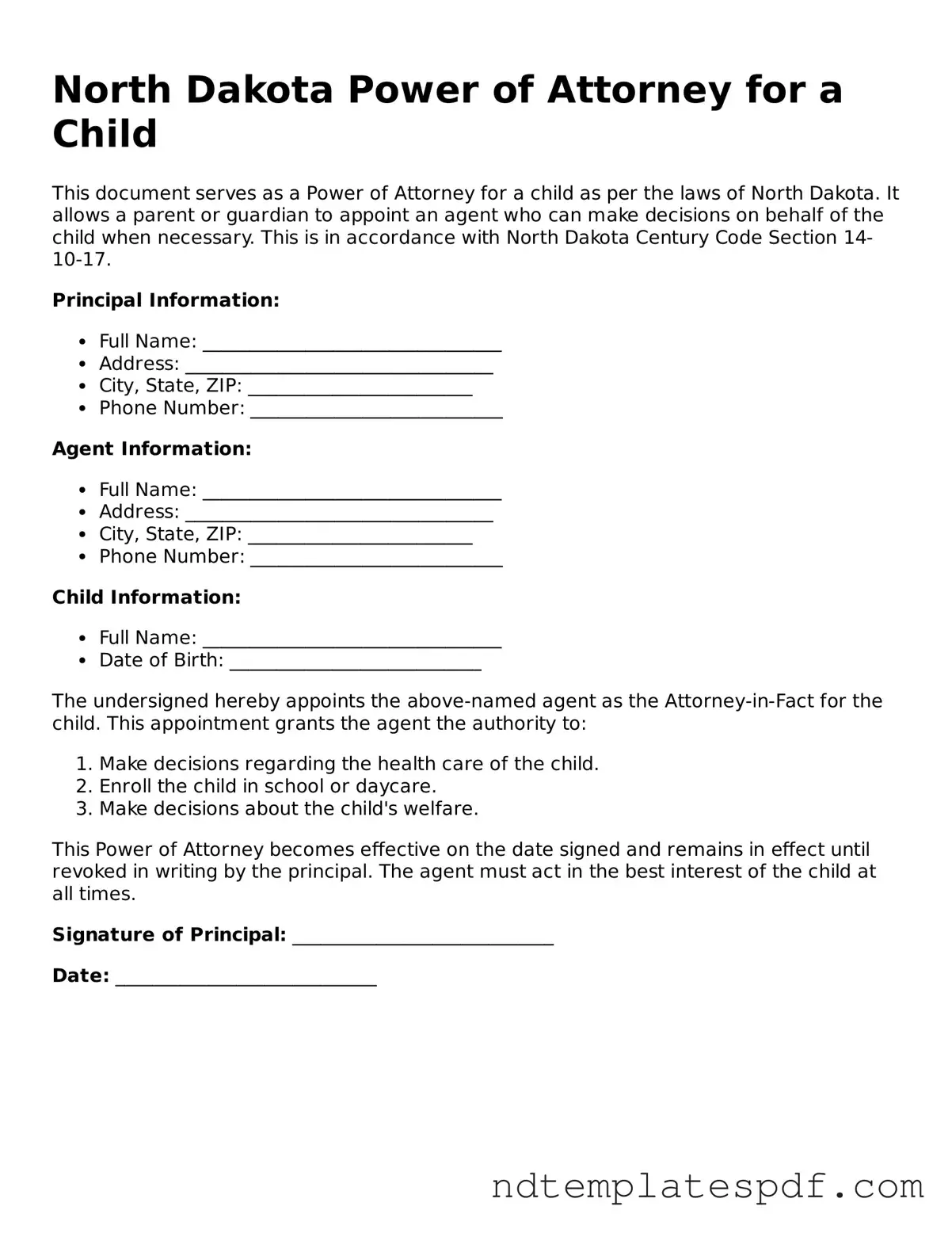Detailed Steps for Using North Dakota Power of Attorney for a Child
Filling out the North Dakota Power of Attorney for a Child form requires careful attention to detail. After completing the form, you will need to ensure it is signed and dated appropriately. This document grants authority to another person to make decisions regarding a child’s care and welfare.
- Obtain the Power of Attorney for a Child form from a reliable source, such as a legal website or local government office.
- Begin by filling in the names of the child and the parent or legal guardian granting the power of attorney.
- Provide the child's date of birth and address in the designated sections.
- Identify the individual who will act as the agent by entering their full name and address.
- Specify the duration of the power of attorney. Indicate whether it is for a specific period or until revoked.
- Clearly outline the powers being granted to the agent. This may include decisions about education, healthcare, and general welfare.
- Both the parent or legal guardian and the agent must sign the form in the appropriate spaces provided.
- Have the signatures notarized to ensure the document is legally binding.
- Make copies of the completed form for your records and for the agent.
